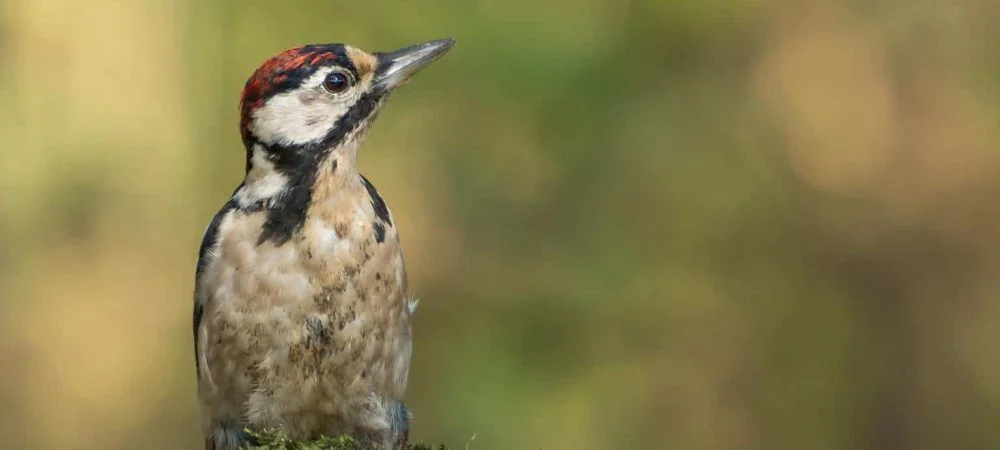
Want to learn more? Take a look at the North American Guide to Woodpeckers
Alabama is a southeastern state in the Deep South region of the U.S., bordered by Tennessee, Georgia, Florida, the Gulf of Mexico, and Mississippi.
Due to its unique location, Alabama has a humid subtropical climate.
The state typically has very hot summers and mild winters with precipitation throughout the year. Alabama is home to 21 state parks that encompass roughly 48,000 acres of land and water.
This interesting climate and land make a welcoming home to various species of woodpeckers.
In fact, you can observe 8 fascinating species of woodpeckers throughout the state of Alabama.
While visiting the state, you are likely to see the Pileated Woodpecker while you are least likely to observe the Red-Cockaded Woodpecker.
Take a look at our article on How to Attract Woodpeckers?
What Woodpeckers can be seen in Alabama?
Table of Contents
1. Red-bellied Woodpecker
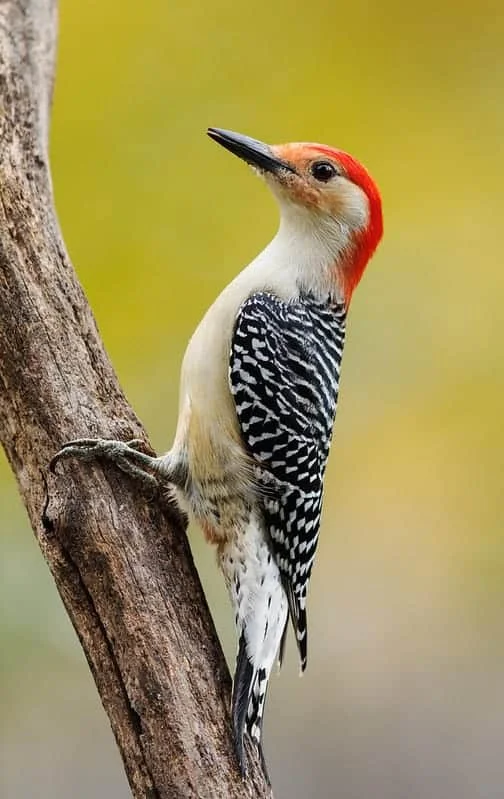
Wingspan
15-18 inches
Weight
2.65 ounces
Life Expectancy
12 years
Diet
Insects
Red-Bellied Woodpeckers are medium-sized birds with red underbellies, and even more brilliantly red colored heads.
Their backs are recognized as having neutral black and white feathers. Red-Bellied Woodpeckers prefer a wide array of deciduous or coniferous forested habitats and even make homes in suburban areas in Alabama.
During the breeding season, males excavate their nesting sites which are usually in dead tree trunks.
Males will call and tap on the tree to attract females, and they nest in the same tree every year. Unlike other species, this woodpecker’s diet consists of more fruit than insects.
They hang upside down while they feed on wild berries. These birds often migrate south in extremely cold winter months.
Red-Bellied Woodpeckers are common to permanent residents and can be easily spotted in their habitats.
2. Downy Woodpecker
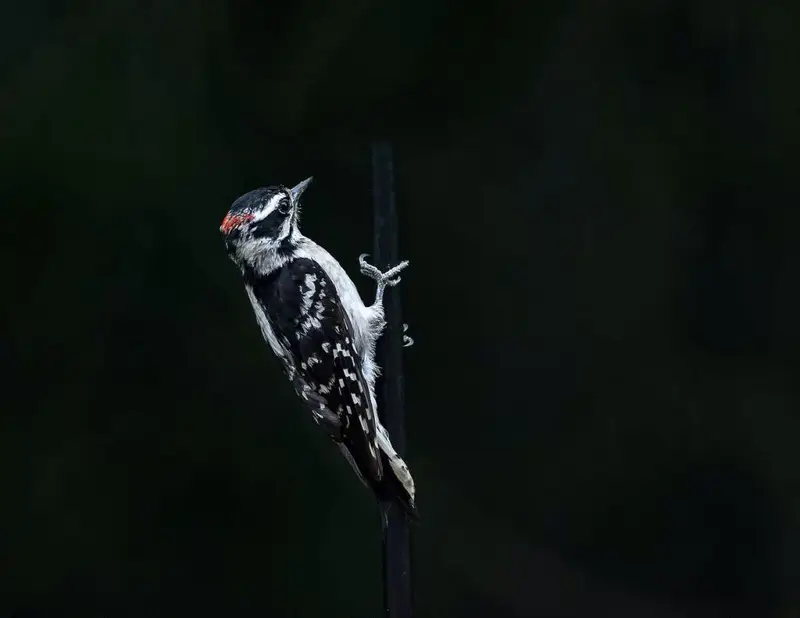
Wingspan
3.27 to 4.13 inches
Weight
0.75 to 1 ounce
Life Expectancy
12 Years
Diet
Insects & Non-insect arthropods
The Downy Woodpecker is famed as being the smallest woodpecker species in all of North America.
These birds are black with pale bellies, dark wings, and white stripes down their backs. They are also known to have a small area of red on the backs of their heads.
Due to their small size, they have notably tiny bills. Downy woodpeckers are very widespread, but most commonly found in open woodlands, willows, river groves, and in residential areas.
They build their nests in trees and shrubs and rest in their cavities. You will typically see Downy woodpeckers foraging at bird feeders in Alabama’s residential areas.
3. Red-cockaded Woodpecker
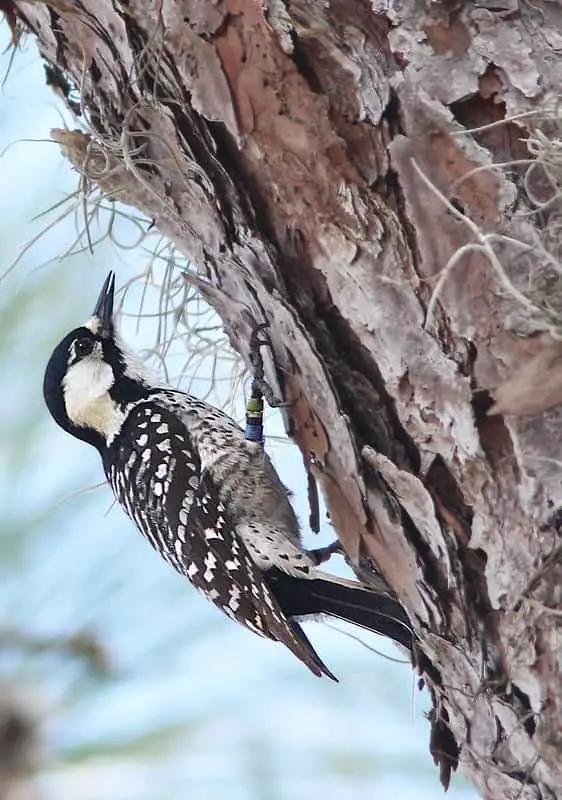
Wingspan
14 inches
Weight
1.5 ounces
Life Expectancy
16 years
Diet
Eggs, insects, nuts, seeds & fruit
Red-Cockaded Woodpeckers, though their name suggests otherwise, are covered in black and white feathers.
They have a notable amount of white on their cheek and backs. However, only males in this species have any type of red color to them, and it is hardly noticeable.
You can observe Red-Cockaded woodpeckers in mature pine forests, usually 80 to 120 years old. You can note the difference between other woodpeckers because Red-Cockaed Woodpeckers are the only ones that make their homes in living pine trees.
They make their nests in other woodland areas as well. These birds are hardly solitary, but often live in families from two to five with only one female woodpecker, as they are monogamous birds.
To observe this species, you can find the majority of them in the Oakmulgee, Talladega, and Conecuh National Forests in Alabama.
4. Hairy Woodpecker
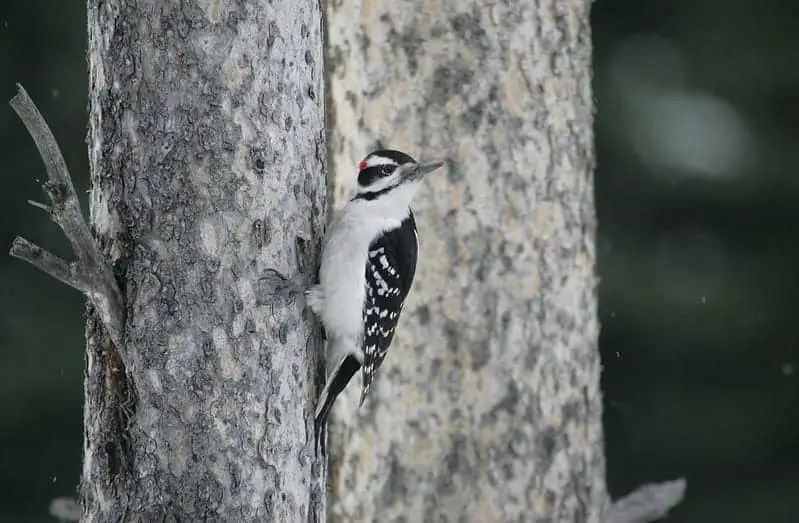
Wingspan
15 inches
Weight
1.4 to 3.4 ounces
Life Expectancy
15 years
Diet
Wood-boring insects & tree sap
Hairy Woodpeckers are a medium sized species with dark wings and backs, but pale bellies. Adult males are often seen with a red-orange patch on their heads.
Hairy Woodpeckers like to be in woodlands in medium to large sized trees while they are usually seen along the main trunks of trees where they make their nests for 3-6 eggs.
It is interesting to note that male Hairy Woodpeckers have a conflict display to warn other males of potential conflict.
You can distinctly recognize this by their high-pitched call. These Woodpeckers can be seen pecking away at tree trunks in Alabama’s abundant woodlands.
5. Pileated Woodpecker
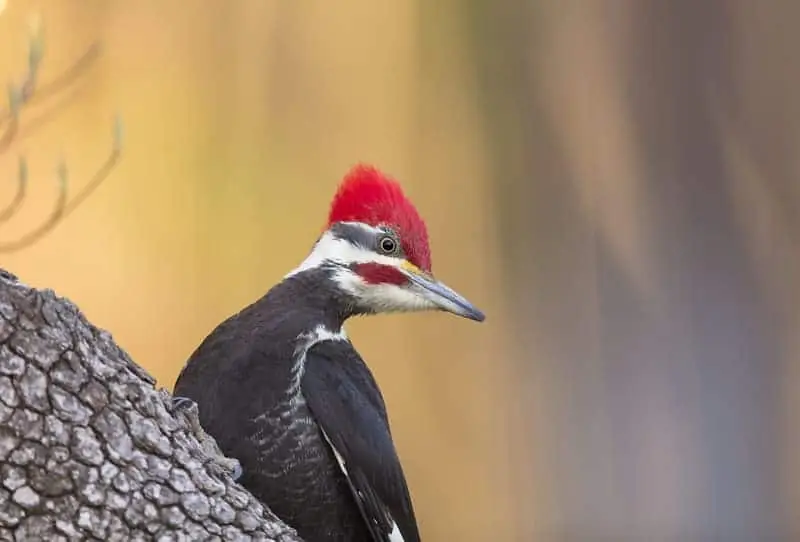
Wingspan
26 to 30 inches
Weight
8.8 to 14.1 ounces
Life Expectancy
13 years
Diet
Fruit, nuts & insects
Pileated Woodpeckers are a larger species of woodpecker, in fact, they are the second-largest woodpecker species in the U.S.
They are known for their black bellies, wings, and backs.
They have white necks with a significant amount of red adorning the tops of their heads.
Pileated woodpeckers prefer forested areas with large trees for nesting, so they tend to make their homes in woodlands, more specifically, coniferous and mature woodlands.
They make their excavations in dead trees and they are rectangular which is notably peculiar for woodpeckers.
During the breeding season, these birds remain monogamous and often breed for life.
They are a common, breeding, permanent resident in all wooded areas throughout Alabama.
6. Yellow-bellied Sapsucker
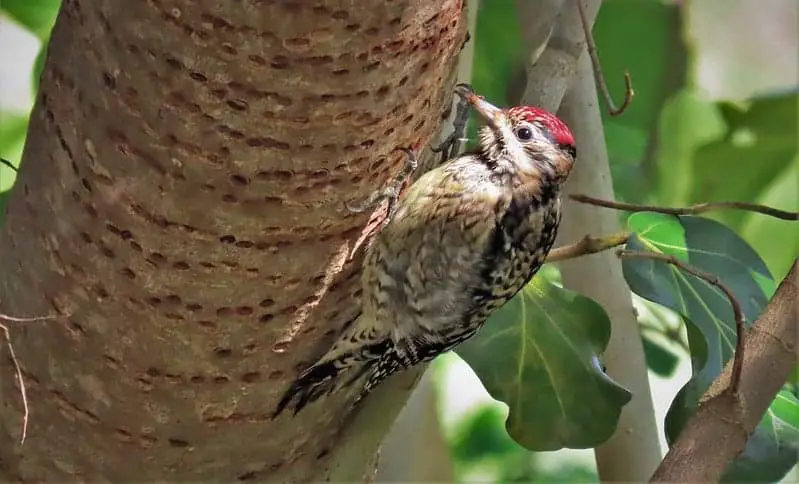
Wingspan
13 to 16 inches
Weight
1.5 to 1.9 ounces
Life Expectancy
7 years
Diet
Tree sap, insects & fruit
Yellow-Bellied Sapsuckers are medium-sized and are identified by a longitudinal wing stripe on their shoulders.
Adult males have red foreheads and red throats, but the females however, have white throats. As their names suggest, they have pastel, yellow bellies.
When it comes to juvenile woodpeckers, they are usually an overall brown color. Yellow-Bellied Sapsuckers are a monogamous species, which means that they have long-term mates each season.
Yellow-Bellies like to take habitat in conifer forests at high altitudes. Though they prefer high trees, they build their nests in the cavities of these trees.
Yellow-Bellied Sapsuckers migrate in open woodlands during the winter.
These woodpeckers are actually fairly common in winter, spring, and fall in all regions of Alabama
7. Northern Flicker
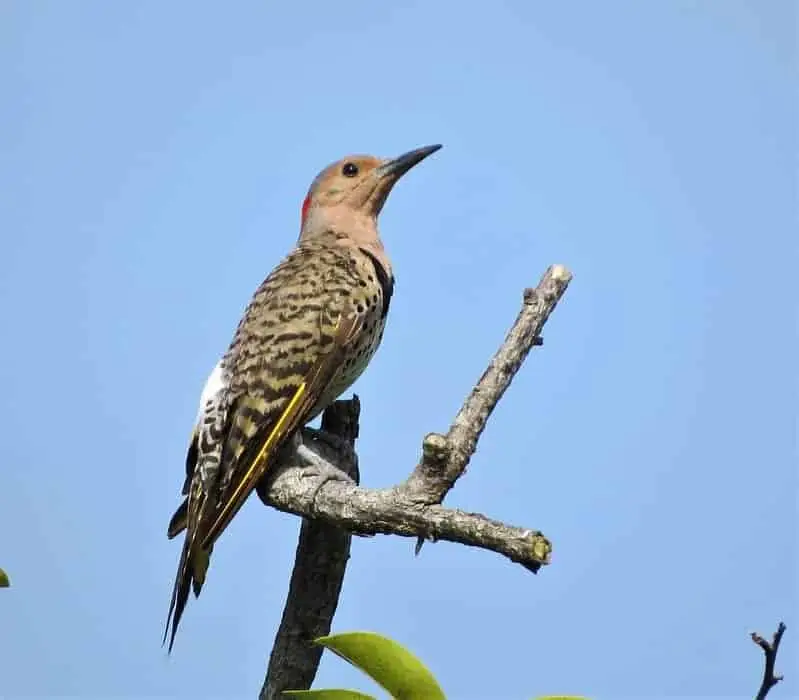
Wingspan
21.3 inches
Weight
6 ounces
Life Expectancy
9 Years
Diet
Insects, seeds, nuts & fruit
Northern Flickers tend to be large sized woodpeckers with brown feathers and black barring on their backs.
They also have some black spots on their bellies. The Northern Flicker is actually Alabama’s state bird!
You can distinguish this bird from other woodpeckers, by observing the white feather patterns near the rump.
The feathers on their wings are usually yellow or red. Note the black crescent on their breast as well. You can often hear these woodpeckers before you see them by their fascinating, repetitive “wake-up, wake-up” sound.
You can find this state bird visiting woodlands with dead trees where they build nests. They will also make their homes in towns and parks!
8. Red-headed Woodpecker
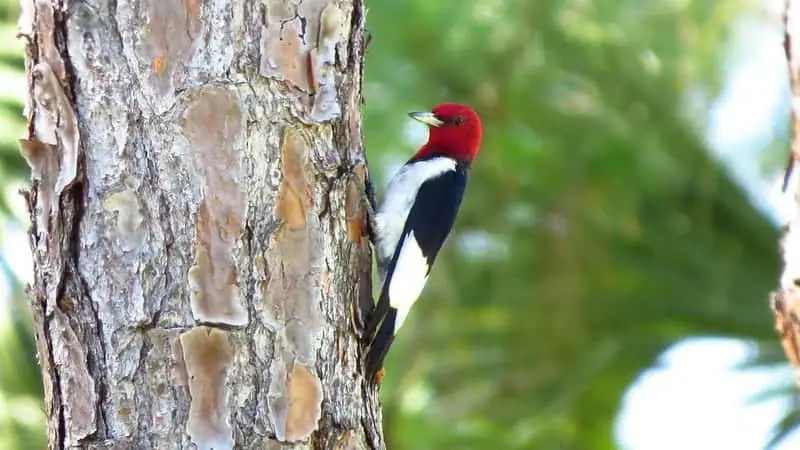
Wingspan
16 inches
Weight
2.5 ounces
Life Expectancy
9 Years
Diet
Insects & Berries
Red-headed Woodpecker: Red-Headed Woodpeckers are medium-sized birds and live up to their name, famed for their bright redheads.
Otherwise, Red-Headed Woodpeckers are covered with white feathers and have dark colored wings.
These woodpeckers are especially common during the spring, summer, and fall, while they are uncommon in winter in all regions in Alabama.
The Red-Headed Woodpecker is found in various types of habitat such as open woodlands, savannas, forests, orchards, agricultural lands, and even suburbia.
However, they do prefer to take habitat in dead trees as nest sites with access to the ground for foraging.
Take note that this species is especially territorial with male and female birds guarding the nest.
During breeding season, mates will attract one another with a game of hide and seek around tree stumps.
Unlike other woodpeckers, Red-Headed Woodpeckers rarely excavate holes for insects. They use the fly and catch technique to capture insects in mid-air.
These birds tend to live in areas east of the Rocky Mountains from southern Canada to the Gulf States. They migrate from the northern points out of higher elevations.

More Articles.
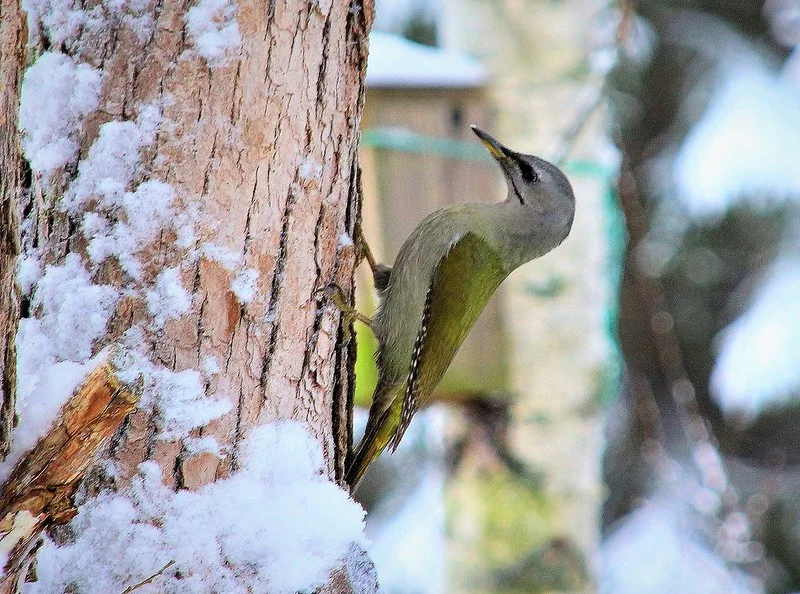
What Woodpeckers can you see in Italy? (8 Species with Pictures & Sounds)
What woodpeckers can you see in Italy? There are 8 different species of woodpecker that
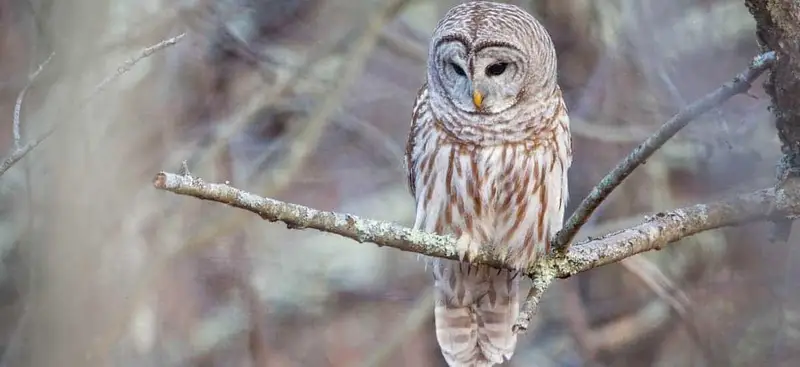
How to attract Owls to your yard?
The best way of attracting Owls to your yard is to offer them a nesting

How To Attract Birds To A Balcony?
The best way to attract birds to a your balcony is to choose the correct

About Us
We are avid bird-watchers who recently retired, allowing us more time to travel the world. Fortunately, we have managed to visit numerous countries around Europe, Asia, and America. Watching and photographing birds has been a passion for many years and we are making the most of the extra time on our hands!
